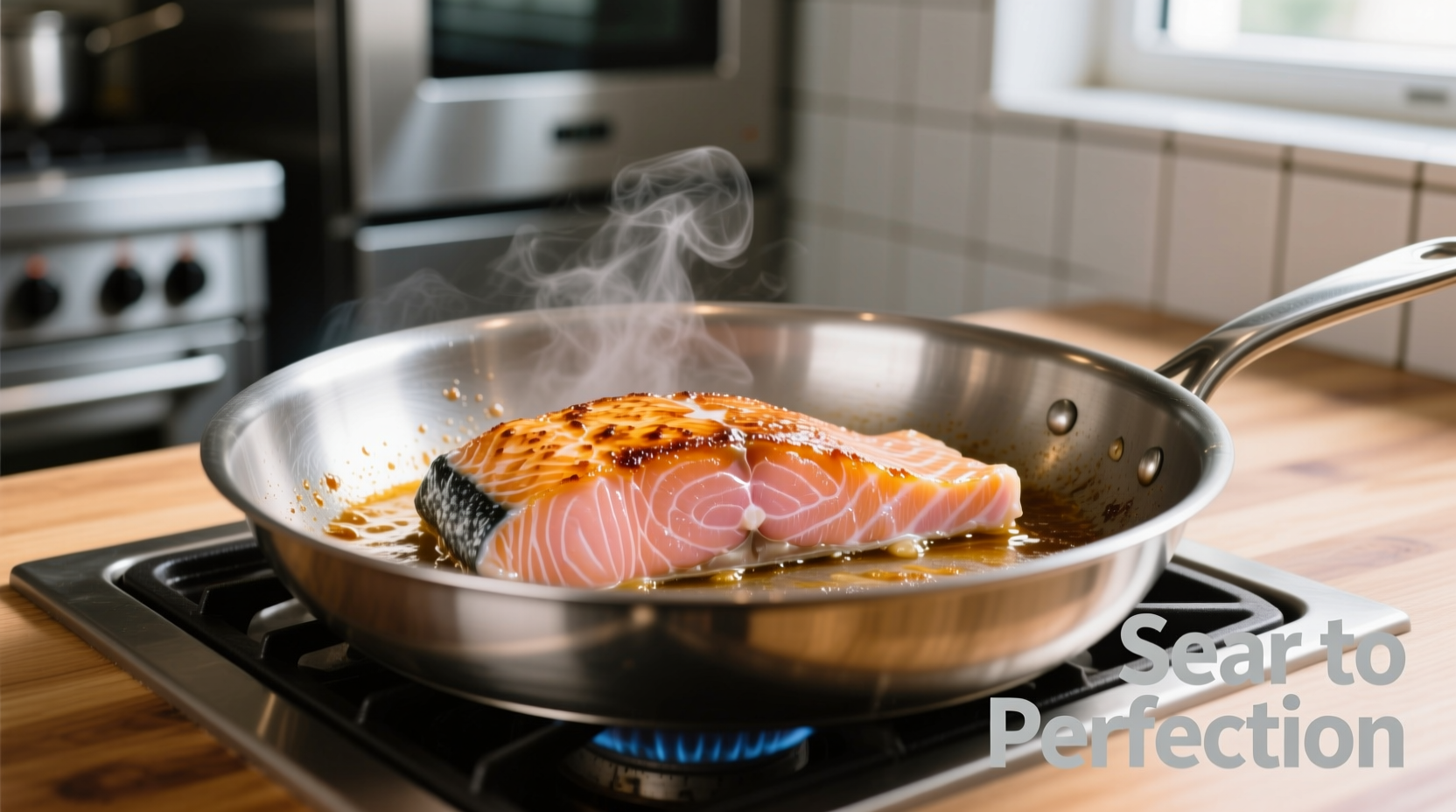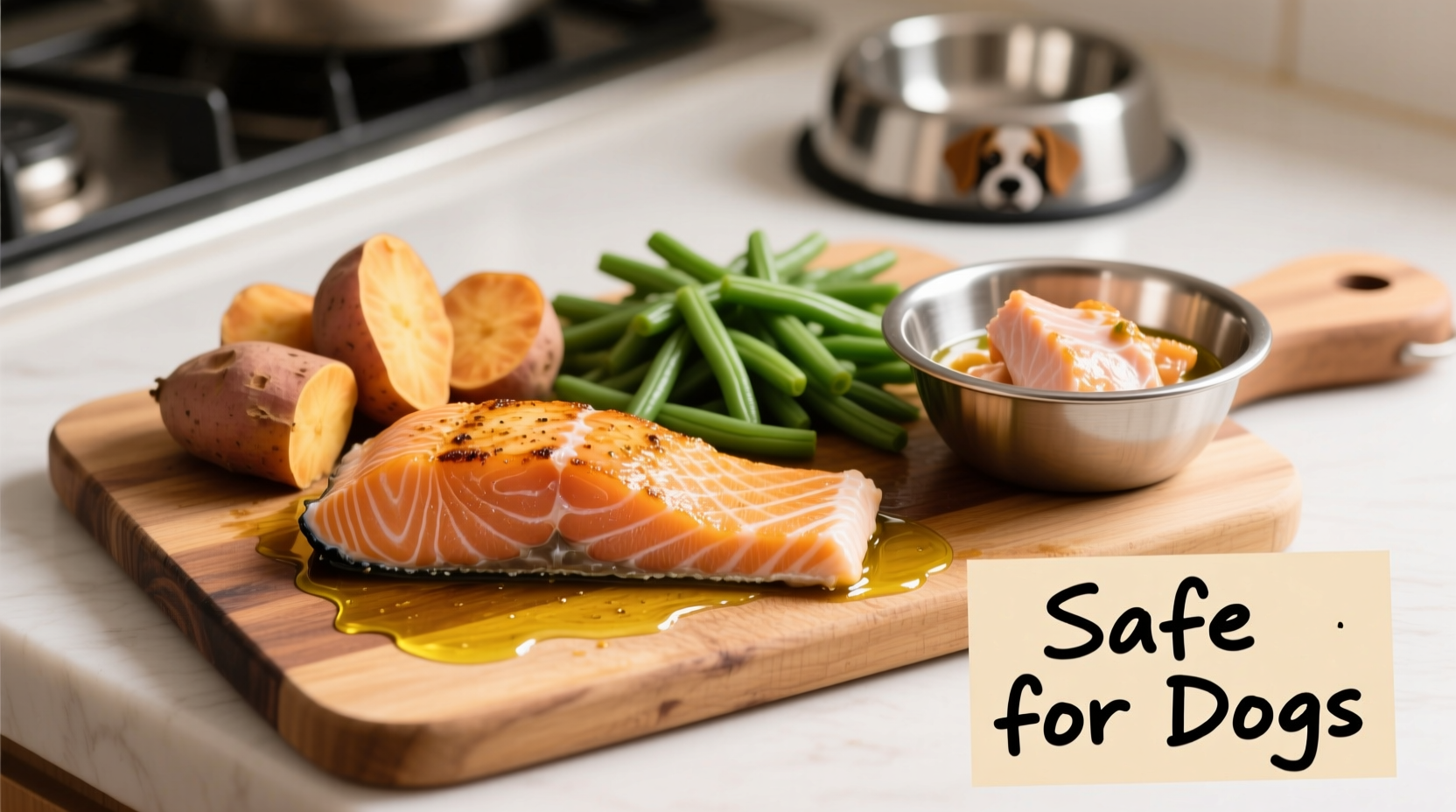The safest way to cook salmon for dogs is to bake or boil boneless, skinless salmon fillets until fully cooked (145°F internal temperature) with no added seasonings, oils, or butter. Always remove all bones and serve in appropriate portions based on your dog's size—typically 1 ounce per pound of body weight, max 4 ounces daily for large dogs. Never feed raw or undercooked salmon due to parasite risks.
Want to boost your dog's health with salmon's omega-3 benefits without risking dangerous parasites or digestive issues? You're in the right place. As a chef with expertise in food safety and preparation techniques, I've developed this vet-approved cooking method that delivers maximum nutritional value while eliminating common hazards. Follow these steps to prepare salmon that's both safe and beneficial for your canine companion.
Why Salmon Benefits Dogs (When Prepared Correctly)
Salmon provides high-quality protein and omega-3 fatty acids that support your dog's skin, coat, and joint health. According to the American Veterinary Medical Association, properly cooked salmon can be a valuable supplement to commercial dog food. The omega-3s EPA and DHA found in salmon reduce inflammation and may improve cognitive function in aging dogs.

Critical Safety Considerations Before You Start
Before preparing salmon for your dog, understand these vital safety factors that many pet owners overlook:
| Risk Factor | Safe Preparation Method | Unsafe Practice |
|---|---|---|
| Salmon poisoning disease | Cook to 145°F internal temperature | Feeding raw or undercooked salmon |
| Choking hazards | Complete bone removal before cooking | Serving with bones intact |
| Digestive upset | No seasonings, oils, or butter | Using garlic, onions, or excessive fat |
This comparison comes from research by the Veterinary Information Network, which documents numerous cases of salmon poisoning in dogs fed improperly prepared fish. The parasite Neorickettsia helminthoeca causes this potentially fatal condition and can only be eliminated through proper cooking.
Step-by-Step Cooking Method: The Foolproof Approach
Follow this precise method developed through culinary science principles to maximize safety and nutritional retention:
Preparation Phase
- Select fresh or frozen boneless, skinless salmon fillets (wild-caught preferred)
- Thaw frozen salmon in the refrigerator overnight—never at room temperature
- Inspect thoroughly for any remaining pin bones using tweezers
- Rinse under cold water and pat completely dry with paper towels
Cooking Process
- Preheat oven to 375°F (190°C) for baking OR fill a saucepan with 1 inch of water for poaching
- Place salmon in a single layer on a parchment-lined baking sheet or in the saucepan
- Cook for 12-15 minutes (baking) or 8-10 minutes (poaching) until opaque throughout
- Verify internal temperature reaches 145°F (63°C) using a food thermometer
- Let cool completely before serving
Serving Guidelines: Portion Control Matters
Even safe preparation won't protect your dog if portions are excessive. Follow these veterinarian-recommended guidelines:
- Small dogs (under 20 lbs): Maximum 1 ounce, 1-2 times weekly
- Medium dogs (20-50 lbs): Maximum 2 ounces, 1-2 times weekly
- Large dogs (50+ lbs): Maximum 4 ounces, 1-2 times weekly
Introduce salmon gradually over 7-10 days to monitor for any digestive sensitivity. The American College of Veterinary Nutrition emphasizes that fish should never exceed 10% of your dog's total weekly diet to maintain nutritional balance.
When to Avoid Salmon Completely
Certain health conditions make salmon inappropriate despite proper preparation:
- Dogs with pancreatitis or history of fat-related digestive issues
- Dogs allergic to fish (signs include itching, vomiting, or diarrhea)
- Dogs on blood-thinning medications (omega-3s have natural anticoagulant properties)
- Puppies under 12 weeks (their digestive systems are too immature)
Always consult your veterinarian before introducing new proteins, especially if your dog has existing health conditions. The FDA's Center for Veterinary Medicine notes increasing cases of diet-related health issues from improper homemade pet food preparation.
Healthy Alternatives When Salmon Isn't Suitable
If your dog can't tolerate salmon, consider these safer alternatives that provide similar nutritional benefits:
- Cooked white fish (cod, haddock) prepared using the same method
- Commercially available fish-based dog foods with veterinary approval
- Algal oil supplements (vegetable-based omega-3 source)
- Specially formulated fish oil supplements designed for dogs
Remember that variety matters in canine nutrition. Rotate protein sources to prevent food sensitivities while ensuring balanced nutrition through consultation with your veterinarian.











 浙公网安备
33010002000092号
浙公网安备
33010002000092号 浙B2-20120091-4
浙B2-20120091-4